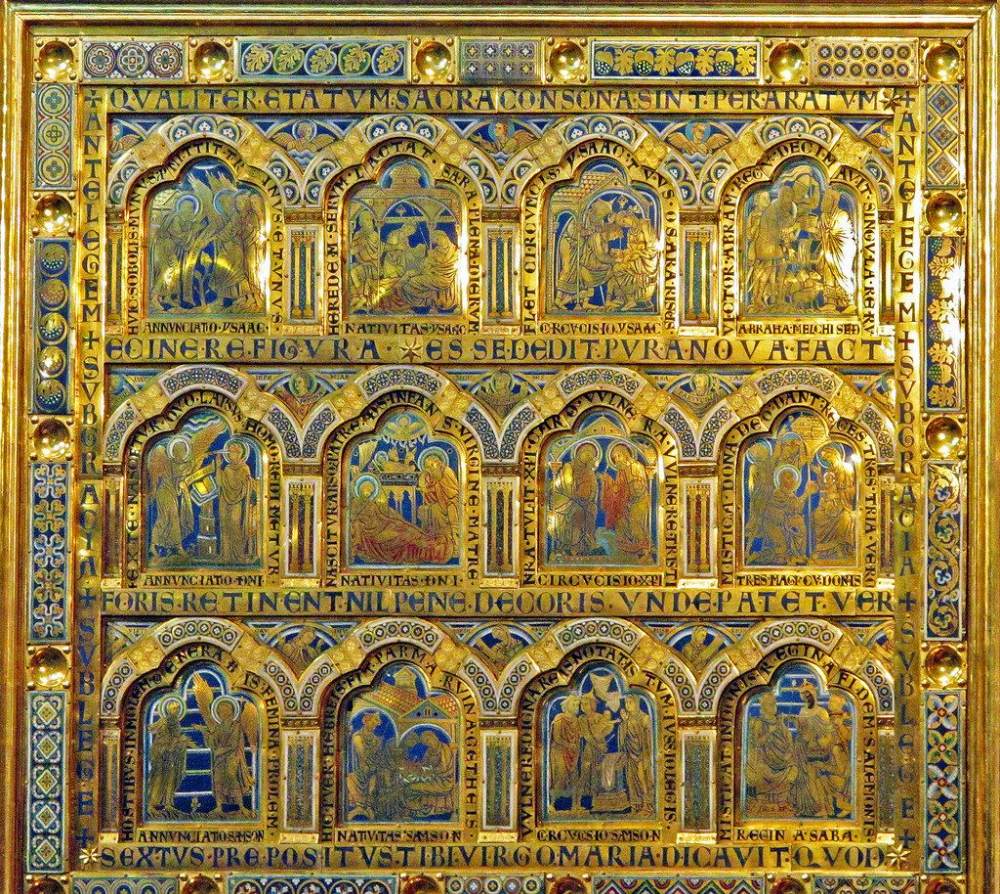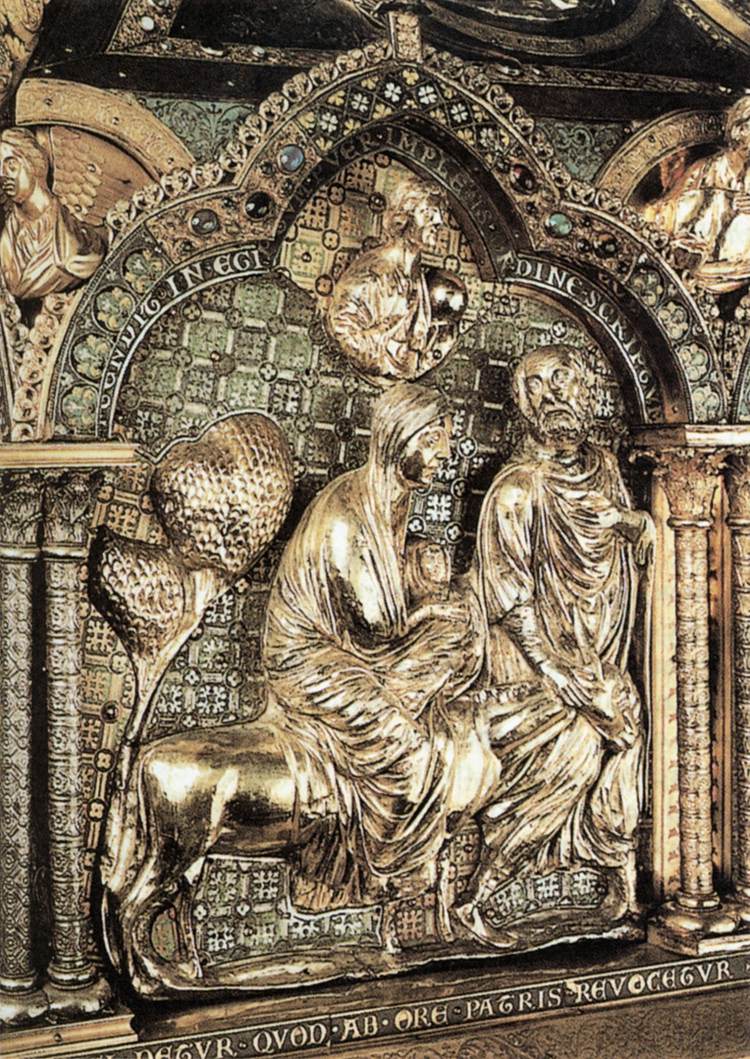French goldsmith. His known works indicate that he was one of the leading metalworkers of his day and an early exponent of the classicising styles around 1200 that formed a transition between Romanesque and Gothic. In his two dated signatures, "NICOLAUS VIRDUNENSIS (1181)" on the enamel decoration of the former pulpit in Klosterneuburg Abbey, Austria, and "MAGISTER NICHOLAUS DE VERDUM (1205)" on the Shrine of the Virgin in Tournai Cathedral, the artist gave as his place of origin Verdun, in Lorraine, an area that in the 12th century had close economic and cultural links with the Rhineland, Champagne, the Ile-de-France and the metalworking centres of the Meuse. A more ambiguous signature, "NICOLAUS DE VERDA", was on the pedestal of one of a lost pair of enthroned, silver-gilt statuettes in Worms Cathedral representing St Peter and the founder Queen Constance, the wife either of Emperor Henry VI (m. 1186; d 1198) or of Emperor Frederick II (m. 1209; d 1222). The spelling Verda may perhaps be a defect or a copyist's error. The theory that Nicholas spent his last years as a citizen of Tournai, or had a son there of the same name, was based on mistaken evidence: the reference to a 'namesake' dates from 1318, not 1217, and concerns not a painter on glass (voirier) but a furrier (vairier).
Master Nicolas of Verdun is known by his work, not his life. Neither date nor place of his birth have been established. The twelfth century was a time of general turmoil, power struggles, crusades, heresies, persecutions, famines, papal schisms, regicides, migrations and new threats from expansionist Islam. Little wonder Master Nicolas' birth records are lost. So is all other documentary evidence, e.g. guild membership, marriage license, etc. Tradition has it that Nicolas of Verdun learned his quadruple trade of goldsmith, enamel expert, painter and sculptor as an apprentice to one, or many, of the great artists who had followed Abbot Suger's call to restore and innovate the abbey of Saint-Denis. The great Master of Verdun's renditions of reality are in harmony with other representative masterpieces of the high Middle Ages.
In 1181 he executed his masterpiece, the enamelled ambo, in the form of a triptych representing 51 biblical scene, for the commission of the Prior of the Abbey at Klosterneuburg, near Vienna in Austria. In 1184 he worked in Cologne and realized the Reliquary of the Three Magi for the Cathedral. In 1205 he executed the Reliquary of Our Lady, a sumptuous casket in silver and gilded copper for the Cathedral in Tournai. The high relief figures depict the life of Christ and the shrine is further adorned with magnificent medallions.
//
![]()




